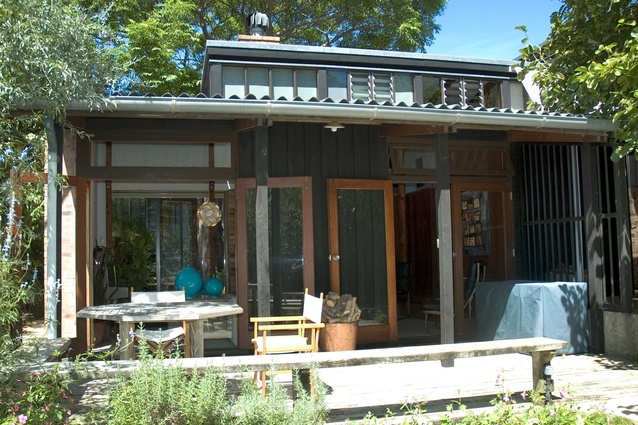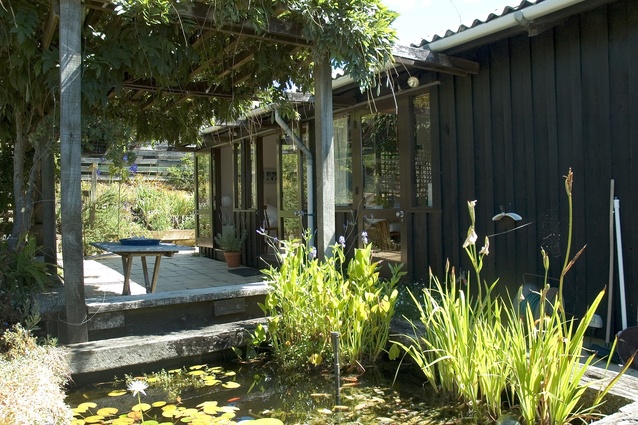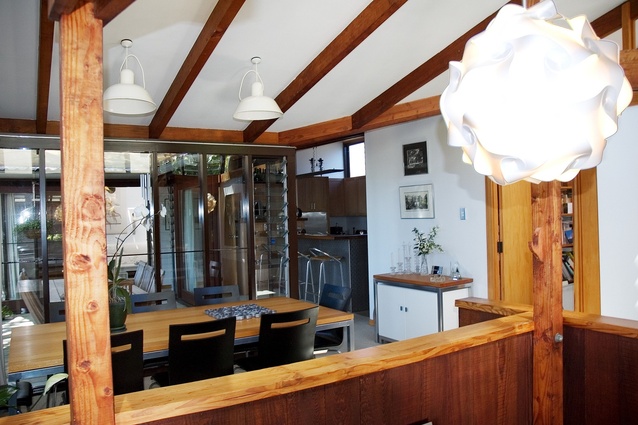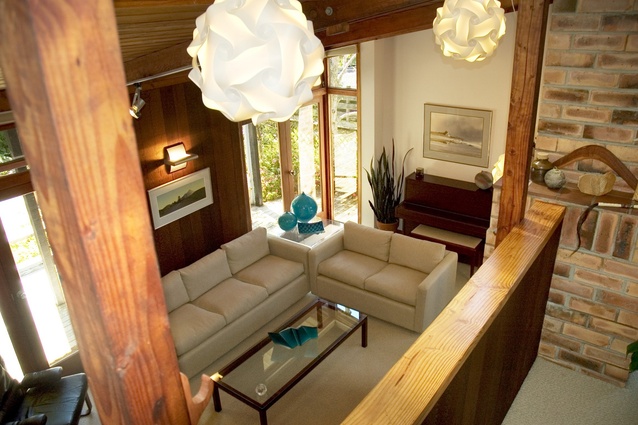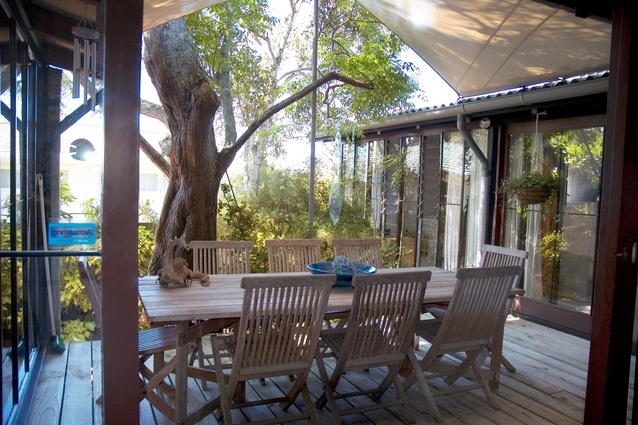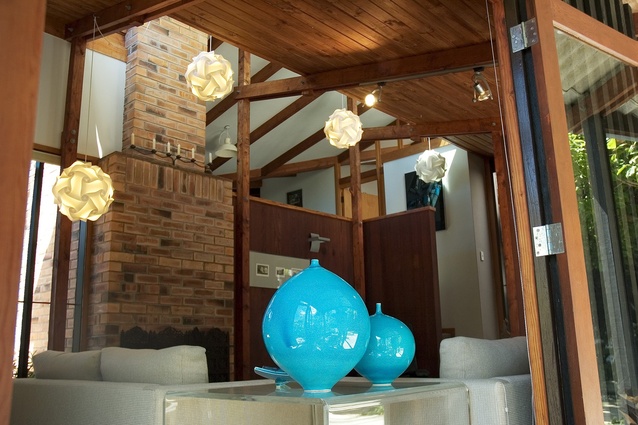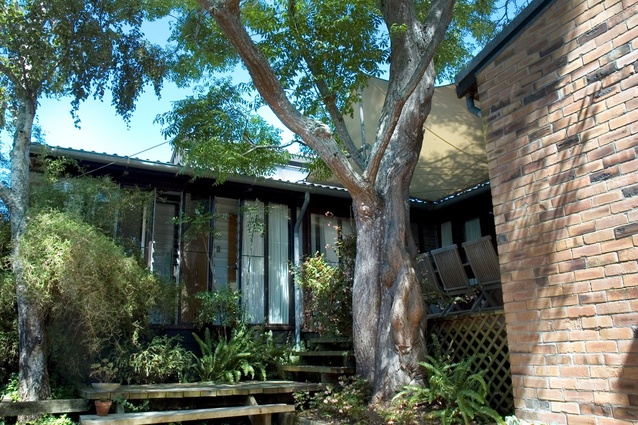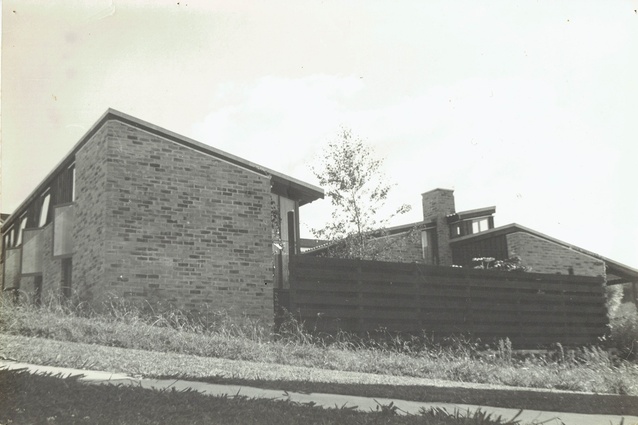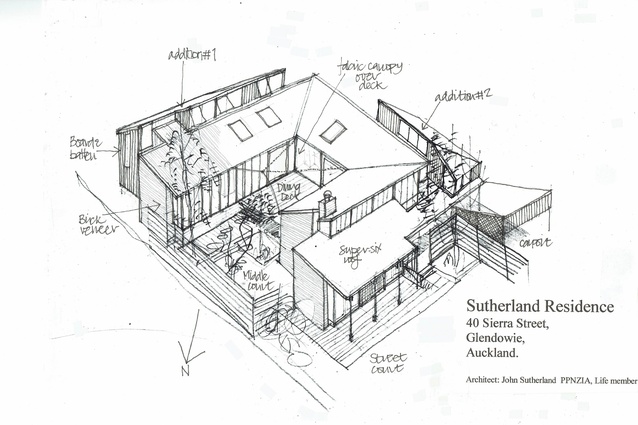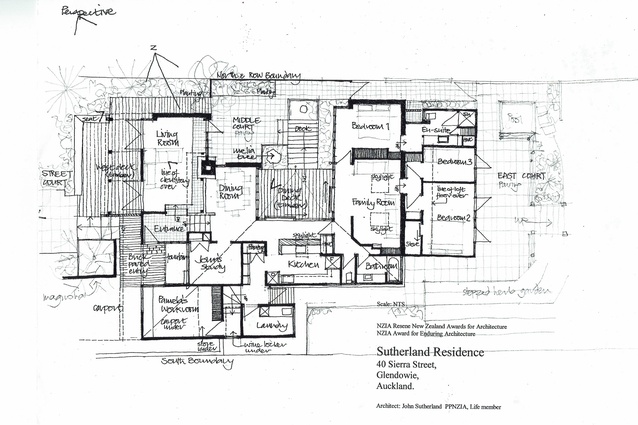Enduring architecture award-winning house on the market
This innovative 1960s modular home and recipient of an NZIA Enduring Architecture award is about to go on the market for the first time.
From market garden to contemporary home, the section at 40 Sierra Street, Glendowie, Auckland was purchased after a ballot for Crown sections by the then Department of Lands and Survey in 1965. The next year, the owners commenced construction and, by October 1966, the family moved into what became affectionately known by the locals as “the cow shed”.
Designed by architect John Sutherland of JASM (which later became JASMaD Group Architects and then Jasmax Architects) for his family, the house was designed and built on a tight budget. The home was initially three bedrooms, one bathroom, a separate WC, galley kitchen, laundry, study, dining room and living room. There was a car port for the one family car at the time – a Mini.

In response to the parameters of the land and budget, the plan developed as a courtyard house on three levels with a bedroom wing to the east, a living wing to the west, joined at the bottom of the “U”, across the south, by bathroom, kitchen, laundry and study. Within the “U” are two raised decks, steps and a paved patio. Extending out from either side of the house are further decks, patios and pergolas for additional living and entertaining.
Entry to the house is from the carport in the south-west corner into a quarry-tiled vestibule. To the left are steps down to the lounge and straight-ahead upstairs to the dining and kitchen space.
In 1966, modular was in, and the whole house was designed on a strict 3-foot (915mm) module for both roof structure and walls. All the roofs are monopitch skillions on North American Oregon-exposed rafters. The three courtyard walls are fully glazed structural joinery used as glass-braced wall systems. The west wall is structural joinery with two large, exposed valley beams to help take the plan around the corners.
The Super Six roof was replaced in the mid-2000s with rib-profile, long-run Colorsteel and the external walls are a combination of brick-veneer and stained, treated pine board and batten. The living room has a fireplace and a timber sarked ceiling. The timber floors are polished heart matai.
By 1972, the family had grown by one and the bedrooms and bathroom were spatially and functionally inadequate. A new block of three narrow but identical bedrooms with sleeping lofts and an en suite for the master bedroom were built along the eastern wall. Access was gained by punching through the original tall windows. The loft generated a clerestory window range to the east. The original two children’s bedrooms were gutted and turned into a family room with sliding door access to the deck.
In 1981, two workshop spaces were added – a sewing room, which has been converted into a fourth bedroom, and the laundry was punched out to grow the kitchen storage. The carport was extended to fit another vehicle.
Two of the cell-bedrooms were combined into a double guest room in 1991, the kitchen was replaced in 1994 and the ensuite upgraded in 1996.
In recognition of its timeless contemporary design and the significance of the architect who designed it, the property was awarded an NZIA Enduring Architecture Award in 2004.
The house is scheduled to go to auction in April. Further information can be obtained from Barfoot & Thompson’s Tony Keegan t.keegan@barfoot.co.nz.

